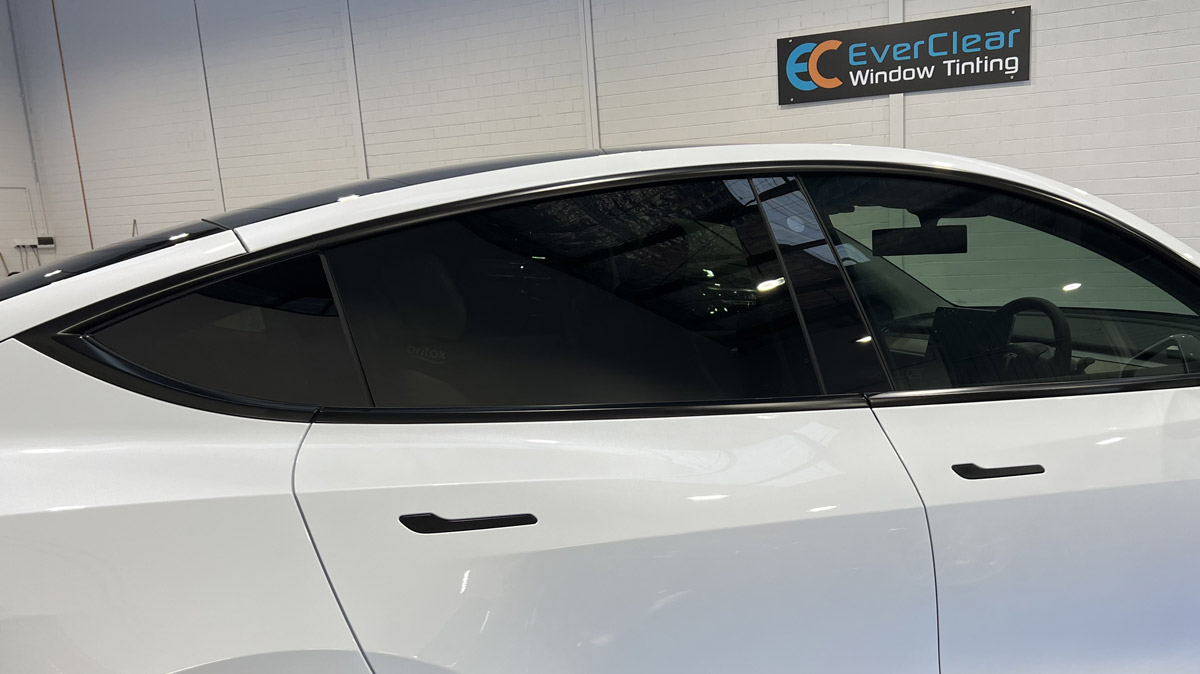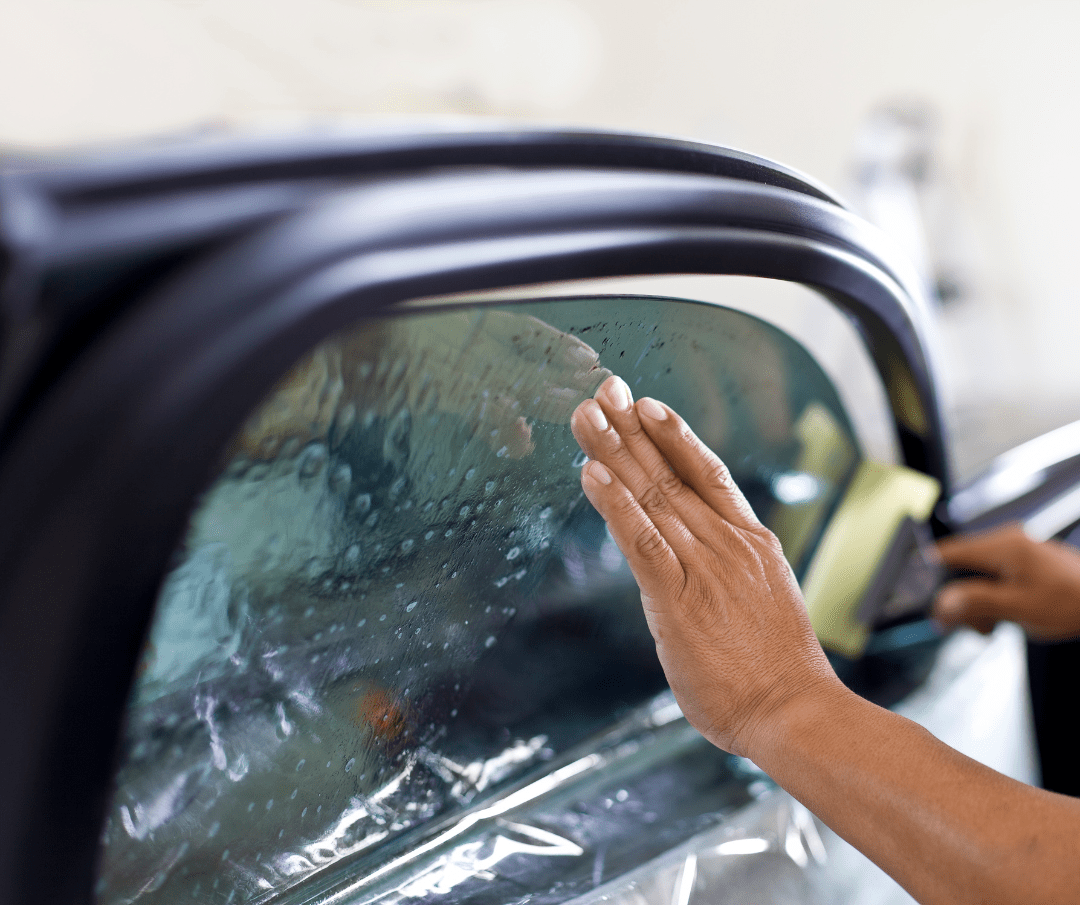Discovering the Various Types of Window Tinting: A Comprehensive Review for Automobile Owners
In the world of automotive improvements, home window tinting stands out as a useful option for vehicle owners intending to improve comfort and visual appeals while giving crucial security (window tinting clovis). Recognizing the legal policies governing tinting in various territories adds one more layer of intricacy to the decision-making process.
Advantages of Home Window Tinting
Window tinting provides a myriad of benefits that improve both the visual appeal and performance of automobiles. One of the main benefits is the decrease of hazardous ultraviolet (UV) rays, which can result in skin damages and raise the threat of skin cancer. By blocking as much as 99% of UV radiation, colored home windows provide important security for travelers throughout day-to-day commutes or long journeys.
Additionally, window tinting substantially boosts indoor convenience by lowering glow and warmth build-up. This not only produces a much more enjoyable driving experience however likewise lessens the reliance on air conditioning, resulting in fuel cost savings. Improved privacy is another crucial benefit; tinted home windows cover the view into the vehicle, safeguarding personal items and ensuring a complacency for owners.
In addition, home window tinting can extend the lifespan of a lorry's inside by lowering sun damage, such as fading and fracturing of furniture. Many territories recognize the aesthetic worth of tinted home windows, which can raise a vehicle's total appearance and resale worth. In summary, the multifaceted benefits of home window tinting make it an important financial investment for automobile owners looking for to enhance design, comfort, and safety and security.
Sorts Of Home Window Color Films
A selection of window color films are offered on the market, each designed to fulfill different demands and preferences. One of the most usual types consist of colored, metalized, ceramic, and hybrid movies.
Dyed movies are preferred for their aesthetic charm, as they supply a darker color without mirroring light. They are usually less costly however might discolor over time. Metalized films, on the other hand, consist of steel particles that show warm and UV rays, boosting sturdiness and efficiency. Nonetheless, they might hinder digital signals.
Ceramic movies stand for a costs alternative, using premium heat denial and UV protection without the disadvantages of reflectivity. These movies are non-conductive and do not impact electronic tools, making them a popular option amongst auto proprietors looking for high efficiency. Finally, hybrid films incorporate the advantages of colored and metalized films, providing a balance between cost and efficiency.
Choosing the right movie depends upon individual priorities such as warmth being rejected, aesthetics, and spending plan. Understanding the attributes of each kind can direct vehicle proprietors in making notified decisions that straighten with their certain needs and choices.

Legal Laws on Tints
Legal guidelines on home window tinting differ dramatically throughout various areas, reflecting neighborhood regulations and safety standards targeted at guaranteeing chauffeur visibility and safety. In the United States, as an example, each state has its own collection of regulations controling the permissible degrees of color darkness, commonly gauged by Visible Light Transmission (VLT) percents. While some states enable darker tints for rear windows, others enforce stricter restrictions on front side home windows and windshields.
Internationally, regulations can vary a lot more considerably (window tinting clovis). Countries may enforce full bans on tinting or restrict it to lighter shades. In the European Union, the front windshield has to enable at least 75% of light to pass through, while the front side windows need to allow at least 70%.
Conformity with these guidelines is vital, as failing to adhere can cause penalties, mandatory removal of non-compliant tints, or perhaps car assessments. Therefore, vehicle owners need to familiarize themselves with their local legislations prior to using window tinting. Consulting with experts and evaluating state or nationwide guidelines can assist ensure that any type of picked color adhere to lawful standards, eventually enhancing both security and aesthetic appeals.
Installment Process and Factors To Consider
When taking into consideration the setup of home window tinting for cars, numerous key aspects must be considered to make sure an effective outcome. Firstly, picking the right type of tint is crucial, as different products supply different levels of heat being rejected, UV protection, and aesthetic charm. Furthermore, it's important to check regional guidelines pertaining to color darkness and reflectivity to remain certified with the regulation.
The setup process itself can be performed do it yourself or by a professional. While DIY packages are available, professional installation is frequently suggested for ideal outcomes. Experts have the needed skills, tools, and experience to ensure a flawless application, which minimizes the threat of bubbles, folds, or peeling.
Prior to installment, the car's windows must be thoroughly cleansed and dried to protect against pollutants from conflicting with the adhesive. By thinking about these factors, automobile proprietors can improve their driving experience while ensuring the longevity and performance of their window color.
Upkeep and Care Tips
Correct maintenance and Get More Information care are essential for protecting the look and functionality of window tinting after installation. To ensure durability, vehicle owners must wait at the very least 48 hours prior to rolling down their home windows, allowing the adhesive to cure appropriately. Normal cleaning is important; nonetheless, it is essential to utilize mild, ammonia-free solutions and soft microfiber fabrics to prevent damaging the tint.
When cleaning your vehicle, stay clear of high-pressure water sprays directly on the tinted home windows, as this can damage the sticky with time. Rather, make use of a damp cloth to wipe the surface delicately. Furthermore, avoid making use of abrasive products, such as harsh sponges or brushes, which can damage the color.
Check your window tint regularly for indications of gurgling, peeling off, or discoloration. Speak with a professional to figure out whether replacements or repairs are needed if any Read Full Article issues are found. Additionally, parking in shaded areas or utilizing sunshades can additionally safeguard your color from long term sunlight exposure, which can cause fading.
Conclusion
In recap, understanding the different kinds of home window tinting is critical for lorry proprietors aiming to boost comfort, aesthetic appeals, and protection. Correct installment and upkeep additionally ensure ideal efficiency and longevity of the color.
In summary, the multifaceted benefits of window tinting make it a valuable investment for car proprietors seeking to blog here boost safety and security, style, and comfort.
Legal policies on home window tinting differ significantly throughout different regions, mirroring neighborhood laws and safety and security standards aimed at making sure vehicle driver visibility and safety. While some states allow darker colors for rear windows, others enforce stricter limitations on front side home windows and windshields.
